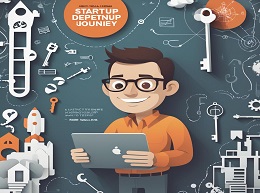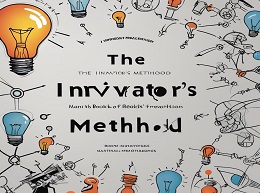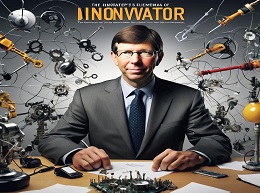The Business Model Navigator: 55 Models That Will Revolutionise Your Business

Introduction: Unlocking the Power of Business Models
In the ever-evolving landscape of modern business, innovation is not just a choice but a necessity. "The Business Model Navigator: 55 Models That Will Revolutionise Your Business" by Oliver Gassmann, Karolin Frankenberger, and Michaela Csik provides a comprehensive guide to understanding and applying a variety of business models that can drive innovation and competitive advantage. This book offers a systematic approach to business model innovation, making it a valuable resource for entrepreneurs, managers, and business leaders seeking to transform their organizations. In this review, we will delve into the core concepts of the book, examine some of the key business models presented, and explore how these models can be applied in real-world scenarios.
Understanding Business Models
At the heart of "The Business Model Navigator" is the concept that a business model describes the rationale of how an organization creates, delivers, and captures value. Gassmann, Frankenberger, and Csik argue that understanding and innovating business models are crucial for sustaining success in a competitive market. They emphasize that business model innovation goes beyond product or service innovation and can be a significant driver of competitive advantage.
Netflix's Transition
One of the most illustrative examples of business model innovation is Netflix. Originally a DVD rental service, Netflix transformed its business model by shifting to a subscription-based streaming service. This change not only disrupted the traditional video rental market but also established Netflix as a dominant player in the entertainment industry. The subscription model provided recurring revenue and a more stable customer base, which has been crucial for Netflix's sustained growth and innovation.
The Four-Dimensional Framework
The authors introduce a four-dimensional framework to analyze and innovate business models. This framework consists of:
1. Who - The target customer
2. What - The value proposition
3. How - The value chain
4. Why - The revenue model
By systematically exploring these dimensions, organizations can identify opportunities for innovation and develop robust business models that align with their strategic goals.
- Example: Uber's Ride-Sharing Revolution-Uber's business model innovation can be analyzed using this framework:
- Who : Targeting urban commuters and individuals seeking convenient transportation.
- What : Offering a convenient, on-demand ride-sharing service.
- How : Utilizing a network of independent drivers and a user-friendly mobile app.
- Why : Generating revenue through ride fares and surge pricing.
This innovative approach disrupted the traditional taxi industry and positioned Uber as a leader in the ride-sharing market.
A Comprehensive Toolkit
"The Business Model Navigator" presents 55 business models, categorized into four main groups: Product, Service, Commerce, and Platform. Each model is explained with real-world examples, making it easier for readers to understand and apply these concepts to their own businesses.
Product Models
1. Add-On : Offering a base product with optional extras that customers can purchase.
Example : The airline industry often uses this model, where customers can buy additional services such as extra legroom, in-flight meals, and priority boarding.
2. Cross-Selling : Selling complementary products or services to existing customers.
Example : Amazon excels at cross-selling by recommending related products based on customer purchase history.
Service Models
3. Subscription : Providing ongoing access to a product or service in exchange for a recurring fee.
Example : Spotify's music streaming service operates on a subscription model, offering users unlimited access to music for a monthly fee.
4. Freemium : Offering a basic product or service for free while charging for premium features.
Example : LinkedIn offers free basic networking services but charges for advanced features such as InMail and premium insights.
Commerce Models
5. Direct Selling : Selling products directly to consumers, bypassing traditional retail channels.
Example : Dell revolutionized the computer industry by selling custom-built PCs directly to consumers online.
6. Franchising : Licensing the rights to operate a business model to third parties.
Example : McDonald's uses franchising to expand its global presence while maintaining control over brand standards.
Platform Models
7. Two-Sided Market : Facilitating interactions between two distinct user groups, typically buyers and sellers.
Example : eBay operates a two-sided marketplace where sellers list items for auction and buyers bid on them.
8. Multi-Sided Platform : Enabling interactions between multiple user groups, creating value for each.
Example : Facebook's multi-sided platform connects users, advertisers, and developers, providing value through social networking, targeted advertising, and app integrations.
Identifying Opportunities
To effectively apply these business models, organizations must first identify areas where their current model may be lacking or where new opportunities for innovation exist. This involves analyzing market trends, customer needs, and competitive dynamics.
Tesla's Direct Sales Model
Tesla identified a gap in the traditional automotive sales model, which relied heavily on third-party dealerships. By adopting a direct sales approach, Tesla enhanced customer experience, maintained control over branding, and improved margins. This innovation has been instrumental in Tesla's success and growth in the electric vehicle market.
Experimentation and Iteration
Business model innovation requires a willingness to experiment and iterate. Organizations should pilot new models on a small scale, gather feedback, and refine their approach based on real-world insights.
Airbnb's Evolution
Airbnb's initial business model focused on short-term room rentals. However, through continuous experimentation, Airbnb expanded its offerings to include entire homes, unique stays, and experiences. This iterative approach allowed Airbnb to tap into new markets and diversify its revenue streams.
Addressing Resistance to Change
One of the main challenges in implementing new business models is overcoming internal resistance to change. Leaders must communicate the vision and benefits of innovation clearly and involve stakeholders in the transformation process.
Kodak's Missed Opportunity
Kodak's reluctance to embrace digital photography is a cautionary tale of the consequences of resisting business model innovation. Despite pioneering digital camera technology, Kodak clung to its traditional film business, ultimately leading to its decline.
Navigating the Future with Business Model Innovation
"The Business Model Navigator: 55 Models That Will Revolutionise Your Business" is an invaluable resource for anyone looking to drive innovation and growth in their organization. By providing a structured approach to understanding and applying diverse business models, Gassmann, Frankenberger, and Csik offer a roadmap for navigating the complexities of modern business. Through real-world examples and practical insights, this book empowers readers to identify opportunities, experiment with new models, and overcome challenges in the journey towards sustained success.
Final Thoughts:
Embracing business model innovation is essential for staying competitive in today's dynamic market environment. "The Business Model Navigator" equips businesses with the tools and knowledge needed to transform their strategies and achieve extraordinary results. Whether you are an entrepreneur, manager, or business leader, this book offers valuable lessons on how to revolutionize your business and thrive in the face of change.













